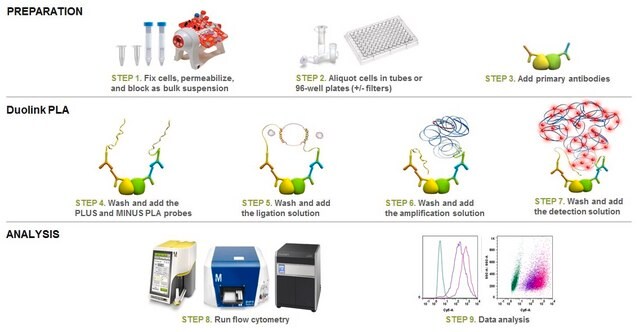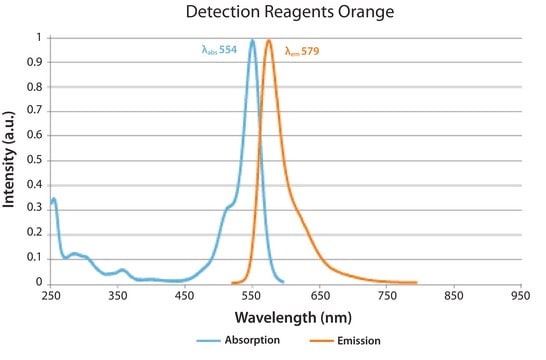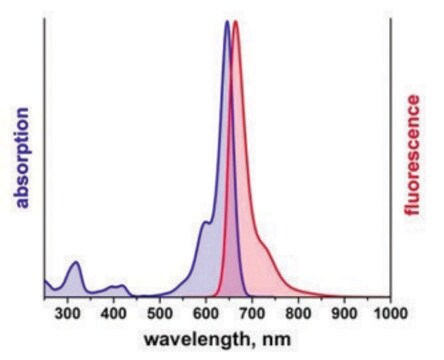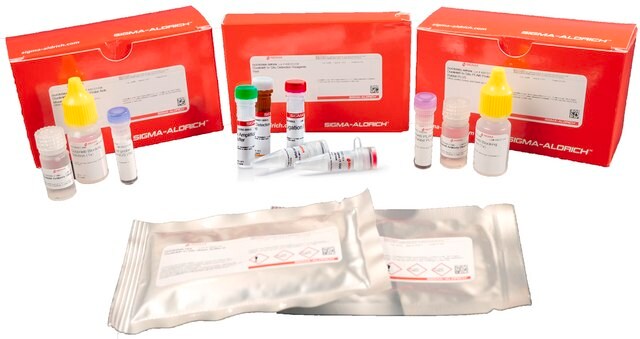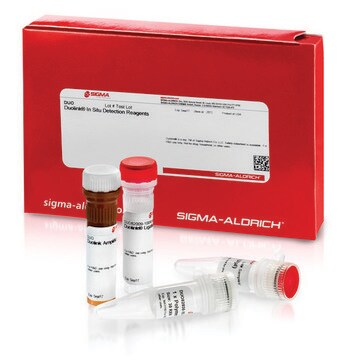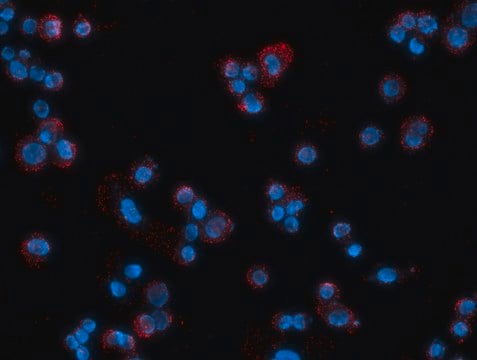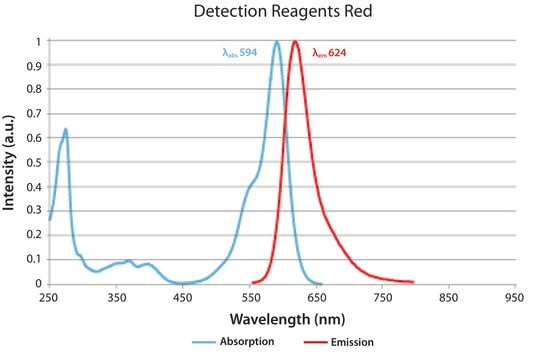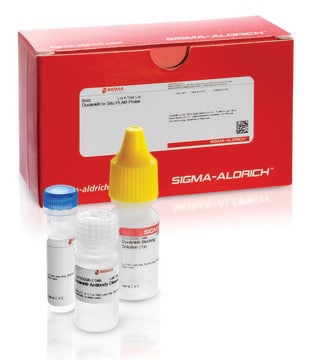DUO94005
Duolink® flowPLA Detection Kit - Violet
Duolink® PLA kit for Flow Cytometry with Violet Detection
Recommended Products
product line
Duolink®
technique(s)
flow cytometry: suitable
immunofluorescence: suitable
proximity ligation assay: suitable
fluorescence
λex 390 nm; λem 476 nm
suitability
suitable for fluorescence
shipped in
dry ice
storage temp.
−20°C
Related Categories
Application
Violet Fluorescence Detection Reagents
Use appropriate laser for ?ex 390 nm excitation
Use appropriate filter for ?em 476 nm emission
Application Note
Primary antibodies are needed. Test your primary antibodies (IgG-class, mono- or polyclonal) in a standard immunofluorescence (IF), immunohistochemistry (IHC), or immunocytochemistry (ICC) assay to determine the optimal fixation, blocking, and titer conditions. Flow validated antibodies are recommended.
Let us do the work for you, learn more about our Custom Service Program to accelerate your Duolink® projects
View full Duolink® product list
Duolink® flowPLA Detection Kits will enable sensitive detection of proteins, protein-protein interactions, and protein modifications within cell populations by flow cytometry. To perform a Duolink® flowPLA experiment, you will need fixed, suspended cells, two primary antibodies that specifically recognize your proteins of interest, a pair of PLA probes (one 100RXN PLUS and one 100 RXN MINUS), wash buffer and a Duolink® flowPLA Detection Kit. The flowPLA Kits are available with 5 different fluorophores: Violet, Green, Orange, Red, or FarRed. The flowPLA Kits contain all the necessary reagents to perform the amplification and detection of bound PLA probes by flow cytometry. Analysis is carried out using standard flow cytometry assay equipment. User must provide a fixed cell suspension, primary antibodies, and corresponding PLA Probes.
Follow the Duolink® PLA Flow Cytometry Protocol to use this product.
Visit our Duolink® PLA Flow Cytometry page on how to run a Duolink® flow experiment, applications, troubleshooting, and more.
Features and Benefits
- Analyze protein protein interactions with flow cytometry readout
- Analyze cell populations with Proximity Ligation Assay
- Increased sensitivity due to rolling circle amplification for low abundant targets
- No overexpression or genetic manipulation required
- Relative quantification possible
- Works with any flow cytometer instrumentation
- Easy to follow flexible protocol
- Publication-ready results
Components
- 5x Detection Solution - Violet (DUO84005)
- 5x Ligation Buffer (DUO82009)
- 5x Amplification Buffer (DUO82050)
- Ligase (1U/μL)
- Polymerase (10U/μL)
See datasheet for more information.
Legal Information
Storage Class Code
10 - Combustible liquids
WGK
WGK 2
Regulatory Information
Certificates of Analysis (COA)
Search for Certificates of Analysis (COA) by entering the products Lot/Batch Number. Lot and Batch Numbers can be found on a product’s label following the words ‘Lot’ or ‘Batch’.
Already Own This Product?
Documents related to the products that you have purchased in the past have been gathered in the Document Library for your convenience.
Difficulty Finding Your Product Or Lot/Batch Number?
How to Find the Product Number
Product numbers are combined with Pack Sizes/Quantity when displayed on the website (example: T1503-25G). Please make sure you enter ONLY the product number in the Product Number field (example: T1503).
Example:
Additional examples:
705578-5MG-PW
PL860-CGA/SHF-1EA
MMYOMAG-74K-13
1000309185
enter as 1.000309185)
Having trouble? Feel free to contact Technical Service for assistance.
How to Find a Lot/Batch Number for COA
Lot and Batch Numbers can be found on a product's label following the words 'Lot' or 'Batch'.
Aldrich Products
For a lot number such as TO09019TO, enter it as 09019TO (without the first two letters 'TO').
For a lot number with a filling-code such as 05427ES-021, enter it as 05427ES (without the filling-code '-021').
For a lot number with a filling-code such as STBB0728K9, enter it as STBB0728 without the filling-code 'K9'.
Not Finding What You Are Looking For?
In some cases, a COA may not be available online. If your search was unable to find the COA you can request one.
Articles
Considerations for proper experimental design, preparation and execution of the Duolink® PLA for flow cytometry protocol.
General tips and tricks for proper experiment execution, aid in identifying potential problems, and provide solutions to ensure a successful Duolink® PLA experiment for flow cytometry.
Traditional flow cytometry has been limited in the ability to detect protein-protein interactions and low abundant proteins events — until now. We have combined Duolink® Proximity Ligation Assay (PLA) with flow cytometry in a convenient kit, making the analysis of protein-protein interactions with flow cytometry readouts a reality.
Protocols
Protocol for use of Duolink® PLA reagents for the detection of individual proteins, protein modifications, and protein-protein interactions within cell populations by flow cytometry.
Our team of scientists has experience in all areas of research including Life Science, Material Science, Chemical Synthesis, Chromatography, Analytical and many others.
Contact Technical Service